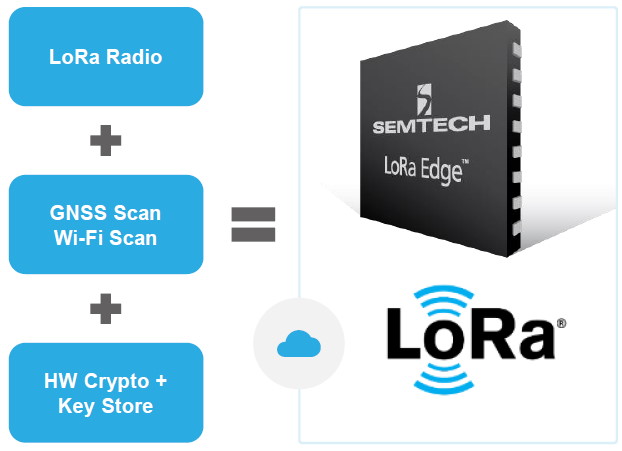I am an outrageously lucky man. I’ve been fortunate enough to visit many countries and see many things. For example, I’ve given training courses in France, Germany, Italy, Sweden, and Japan; I’ve presented guest lectures at universities in America, England, and Norway; and I’ve been invited to speak at conferences in Hawaii, Brazil, India, China, Taiwan, and South Korea (to name but a few). Even better – the cherry on top of the whipped cream on top of the chocolate cake, if you will – is that other people have paid all the bills, which really is the best way to travel if you have a choice.
On my voyages, I’ve seen grown engineers have a full-blown panic attack when they walked onto the stage and faced the audience (I recall one occasion when the poor guy went as rigid as a board and had to be literally carried away from the podium). I also know guys who have spent decades honing their expertise designing things like cache memory subsystems, but who rarely get to see the light of day (much like the professor in the Independence Day movie who said, “They don’t let us out very often”). These reclusive souls inhabit those rarely visited cubicles located in the remote reaches of the office labyrinth, far from any windows, lurking where even the janitorial staff fear to tread. Oftentimes, these hermit-like folks are the epitome of the introvert engineer (we all know the old joke, which goes, Q: “How do you know if an engineer is an introvert or an extrovert?” A: “If he’s an extrovert, he looks at your shoes when he’s talking to you!”).
This is one of the reasons why, whenever I get a chance to talk to students, I recommend they practice their writing and public speaking communication skills because the ability to do either, preferably both, will open many doors and make their mothers very proud.
Sad to relate, out of all the conferences and events I’ve been lucky enough to attend (or that have been lucky enough for me to grace them with my presence), I’ve never managed to make it to Embedded World in Nuremberg, Germany. This bodacious beauty, which currently bills itself as “The trade fair for embedded-system technologies and distributed intelligence,” is one of the biggest exhibitions going in embedded space (where no one can hear you scream).
The reason this comes to mind is that Embedded World 2022 is taking place as we speak – 21 to 23 June 2022 – which is both as I write this column and (assuming you are reading it as soon as it goes live) as you read it.
If I had been lucky enough to attend, one of the things I would have gone out of my way to see would have been the LoRa Cloud Locator announcement from the folks at Semtech.
Just to make sure we are all dancing to the same skirl of the bagpipes, let’s remind ourselves that Semtech, which was founded in 1960, is a supplier of analog and mixed-signal semiconductors and advanced algorithms for consumer, enterprise computing, communications, and industrial end-markets.
Semtech is the developer of LoRa, a long-range networking initiative for the Internet of Things. LoRa (from “long range” communications) is a radio modulation approach that’s based on spread-spectrum modulation techniques derived from chirp spread spectrum (CSS) technology (try saying that ten times quickly).
WAN stands for Wide Area Network. LoRaWAN defines a software communication protocol and system architecture. The continued development of the LoRaWAN protocol is managed by the open, non-profit LoRa Alliance, of which SemTech is a founding member.
LoRa and LoRaWAN together define a Low Power, Wide Area (LPWA) networking protocol designed to wirelessly connect battery operated ‘things’ to the internet in regional, national, or global networks. They target key Internet of things (IoT) requirements such as bi-directional communication, end-to-end security, mobility, and localization services. The LoRaWAN data rate ranges from 0.3 kbit/s to 50 kbit/s per channel. The low power, low bit rate, and IoT use distinguish this type of network from a wireless WAN that is designed to connect users or businesses, which involves carrying more data and using more power.
Just to set the scene, over the past few years, LoRa and LoRaWAN have progressed from the innovation stage to mainstream maturity and evolved into mass adoption. We are talking about 181 countries with LoRaWAN networks deployed, support from 166 public network operators, 2.3+ million gateways in use, and 240+ million deployed endpoints (I’m glad I don’t have to go out and count them).
Since I couldn’t make it to Embedded World to hear about the launch of LoRa Cloud Locator, I did the next best thing, which was to chat with Karthik Ranjan, who is the LoRa Cloud Partnerships and Solutions Leader at Semtech.
“But just what is the LoRa Cloud Locator when it’s at home?” I hear you cry. Well, I’m glad you asked. This little scamp is a Chip-to-Cloud solution featuring LoRa Edge + LoRa Cloud. Of course, this leads us to your follow-up questions, which would be “What is LoRa Edge” and “What is LoRa Cloud?”

In a crunchy nutshell, LoRa Edge is an ultra-low-power platform that integrates a long range LoRa transceiver, multi-constellation scanner, and passive Wi-Fi AP MAC address scanner targeting GNSS asset management applications. The LoRa Edge Platform significantly reduces power consumption by solving the location of the asset in a Cloud-based solver instead of on the device itself. Meanwhile, LoRa Cloud offers component services that work in conjunction with LoRa Edge-enabled chipsets to give customers the opportunity to benefit from Semtech’s chip-to-cloud solution for low-power geolocation. By partitioning the workload between the device and the Cloud, customers benefit from long battery life, which unlocks new use cases for asset tracking that were previously not possible.
Returning to the LoRa Cloud Locator, this is a software as a service (SaaS) that employs Semtech’s LoRa Cloud Modem & Geolocation services. This new service gives customers the opportunity to experience firsthand devices powered by LoRa Edge and evaluate the accuracy and power consumption capabilities of the LoRa Edge platform, which offers an ultra-low-power and cost-effective solution for indoor/outdoor asset tracking use cases.
LoRa Cloud Locator features built-in serverless technology and delivers a simple end-to-end experience for customers to evaluate LoRa Edge implemented in various ecosystem trackers, on either a private or a public LoRaWAN network.
As Karthik says, “Asset tracking is one of the most common use cases across industry verticals. Whether it’s tracking wheelchairs in a hospital, shopping carts in retail, pallets in a supply chain, cattle in agriculture, or pets around a home, asset tracking can be found everywhere. Semtech’s LoRa Cloud Locator is the fastest way for customers to easily see for themselves the benefits offered by purchasing trackers with LoRa Edge, provisioning them onto the application, and seeing their location on the map.”
LoRa Cloud Locator is designed specifically to work with trackers using Semtech’s LoRa Edge LR-series chips with minimal effort. Once configured on the service, together with Semtech’s LoRa wireless radio frequency technology for transmission to the Cloud, customers are able to view the tracker location on the map, typically in less than 15 minutes.
If you are interested in learning more about the LoRa Cloud Locator, you can purchase a LoRa Edge-enabled tracker, create a LoRa Cloud Locator account, and discover how LoRa Edge unlocks new use cases across the entire global supply chain. To access the service, visit locator.loracloud.com where you can browse a selection of compatible trackers by Semtech, Browan, Digital Matter, and Miromico. After purchasing a tracker, you will be able to log in to the application, register your tracker, and view its location on a map using a browser on either your desktop or your mobile device.
Of course, everything comes with a price. In my case, I will have to go out of my way to ensure that my wife (Gina the Gorgeous) doesn’t read this column and get any ideas about things she would like to track. How about you? Do you see a LoRa Cloud Locator in your future?




